FC Barcelona’s evolution is underway as the league champions are currently topping the list after three fixtures, not to mention their last remarkable 8-2 victory over SD Huesca. Yet, as I have explained it in my previous analysis on Barcelona’s evolution that the absence of key midfielders this season – Iniesta and Paulinho – would be the main influencer on Barcelona’s new shape. While Coutinho seems to be the starting central midfielder alongside Busquets and Rakitic, and Dembele the starting left winger, Barcelona’s new shape is ready to re-embrace tiki-taka and their multi-dimensional attacking style. Here is the tactical analysis of how Valverde is shaping up Barcelona’s midfield without Iniesta and Paulinho.
Coutinho in the Central Midfield
With the departure of Neymar from La Liga, Barcelona switched to 4-4-2 and focused on their defensive restructuring. With this, Iniesta who used to be the left central midfielder moved laterally to the respective wing with Busquets and Rakitic at the defensive midfield. Paulinho, on the other hand, often joined Busquets or Rakitic in the defensive midfield mostly at the right side.
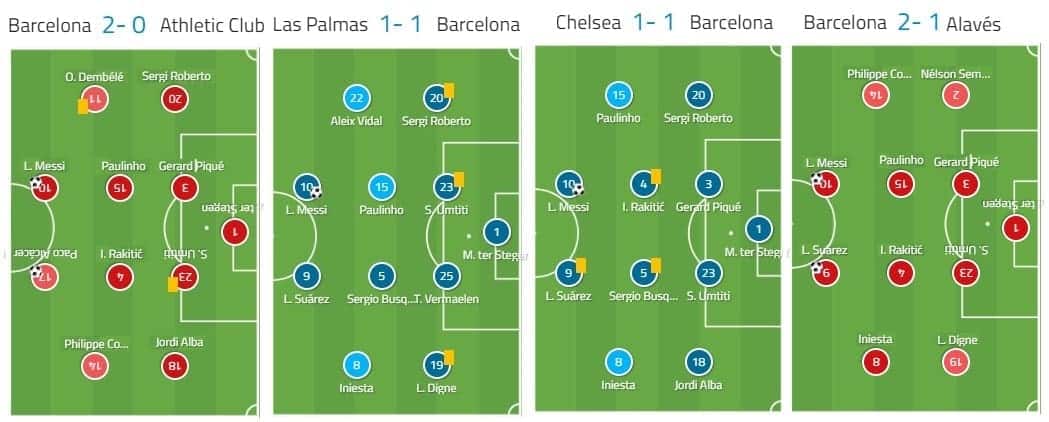
Iniesta provided depth covering to Barcelona by blocking the opponent’s deeper movements in his defensive third. Paulinho, on the other hand, blocked opponents’ forward movements by picking the right defensive spot between the lines thus disturbing their passing play and also made defensive runs to chase and back-tackle the opponent in a way unexpected to the later.

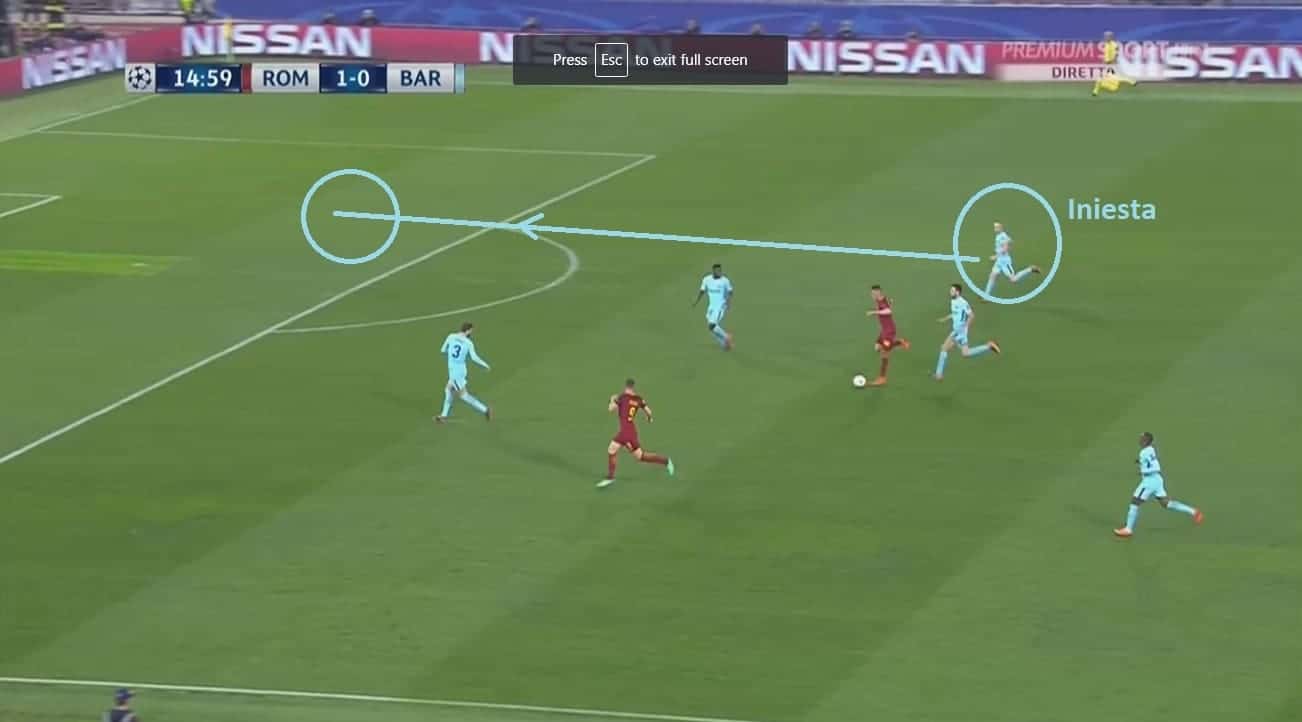

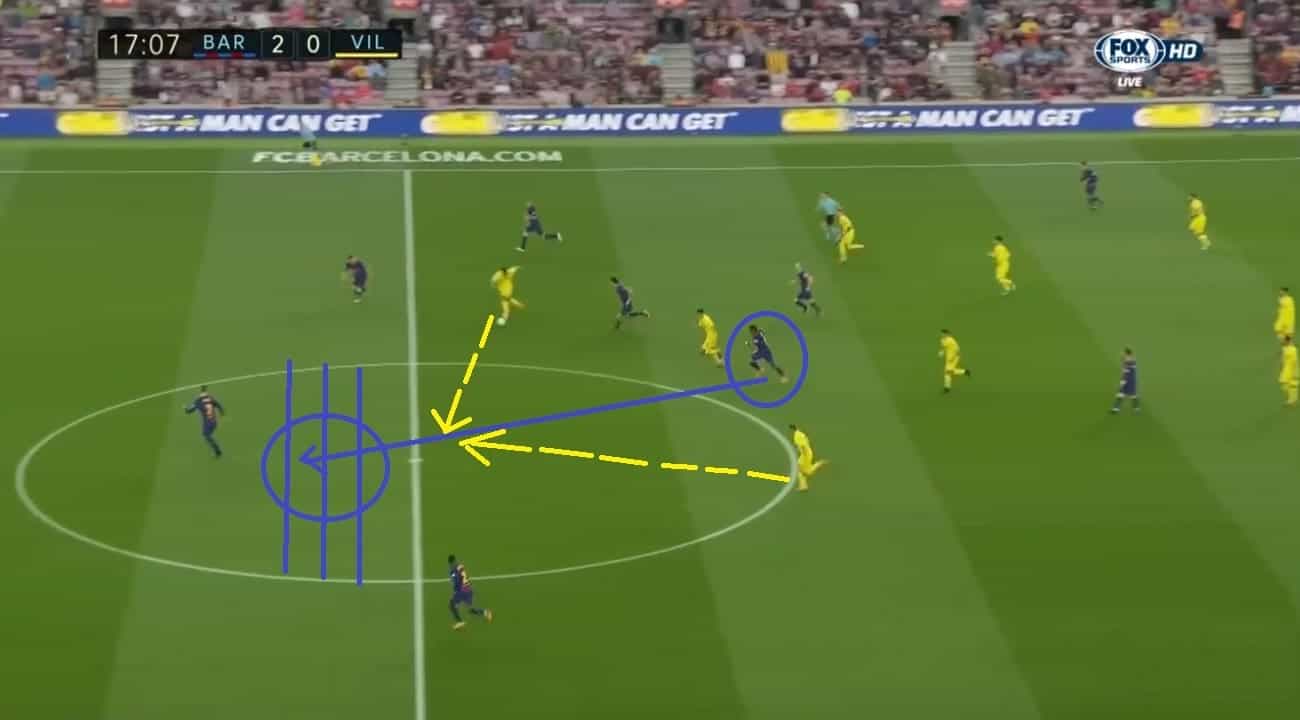
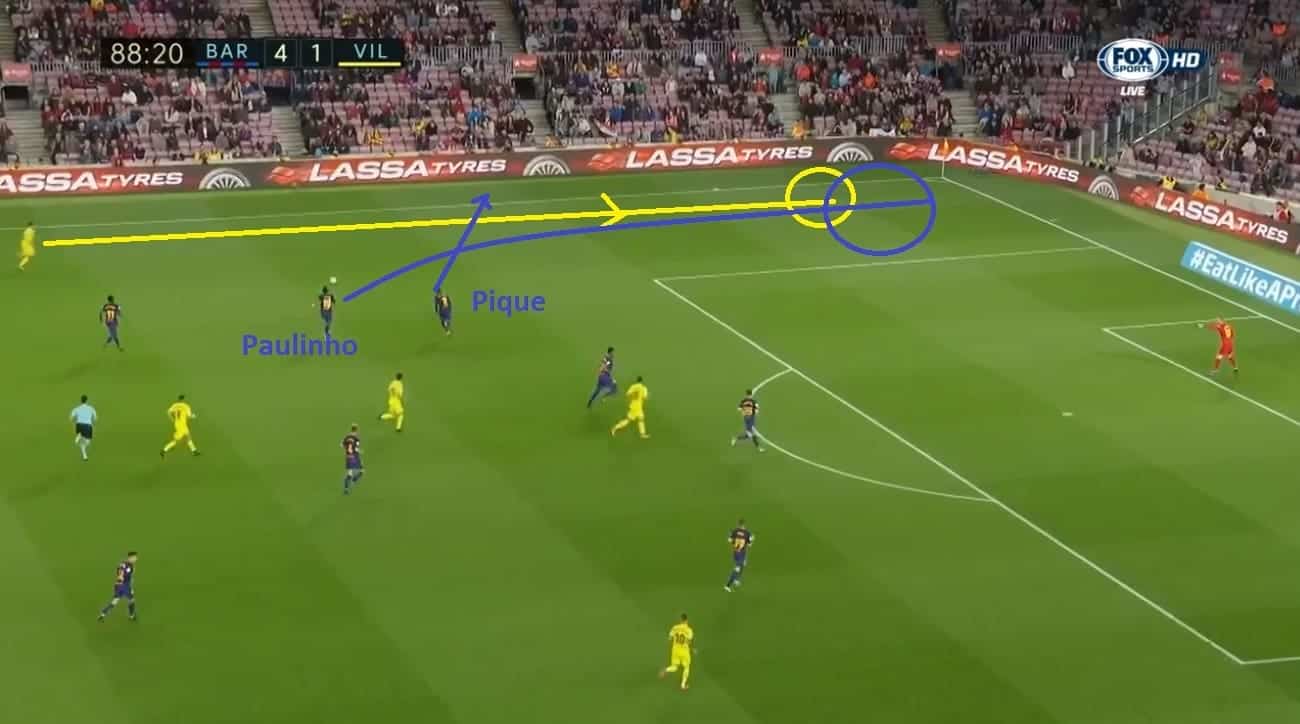
Though with the departure of Iniesta, concerns arose regarding the team’s midfield. Paulinho, who proved to be a noteworthy addition to the midfield, also loaned out. But Valverde has had already another emerging midfield talent in his pool ready, Philippe Coutinho. The Brazilian is playing at the left central midfield position of the 4-3-3 set up this season – the place formerly dominated by Iniesta.
Even though Coutinho stands a little lower in terms of passing, crosses, and dribbling statistics than Iniesta, his statistics are still amazing in absolute terms. With the passing accuracy of 84.3 per cent, crossing success of 35 per cent, and dribbling success of 73 per cent (according to Wyscout.com), Coutinho stands even higher than Paulinho. His through balls, long shots, and set-pieces are all very strong.
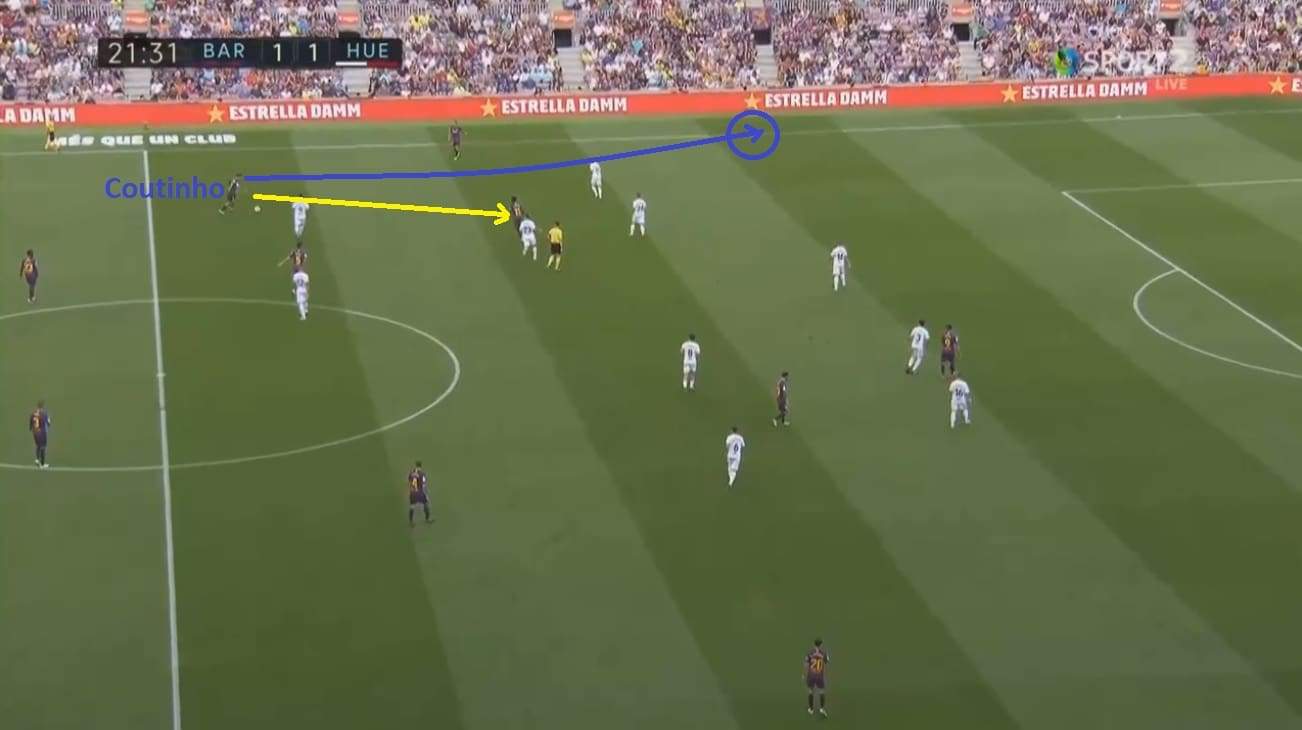
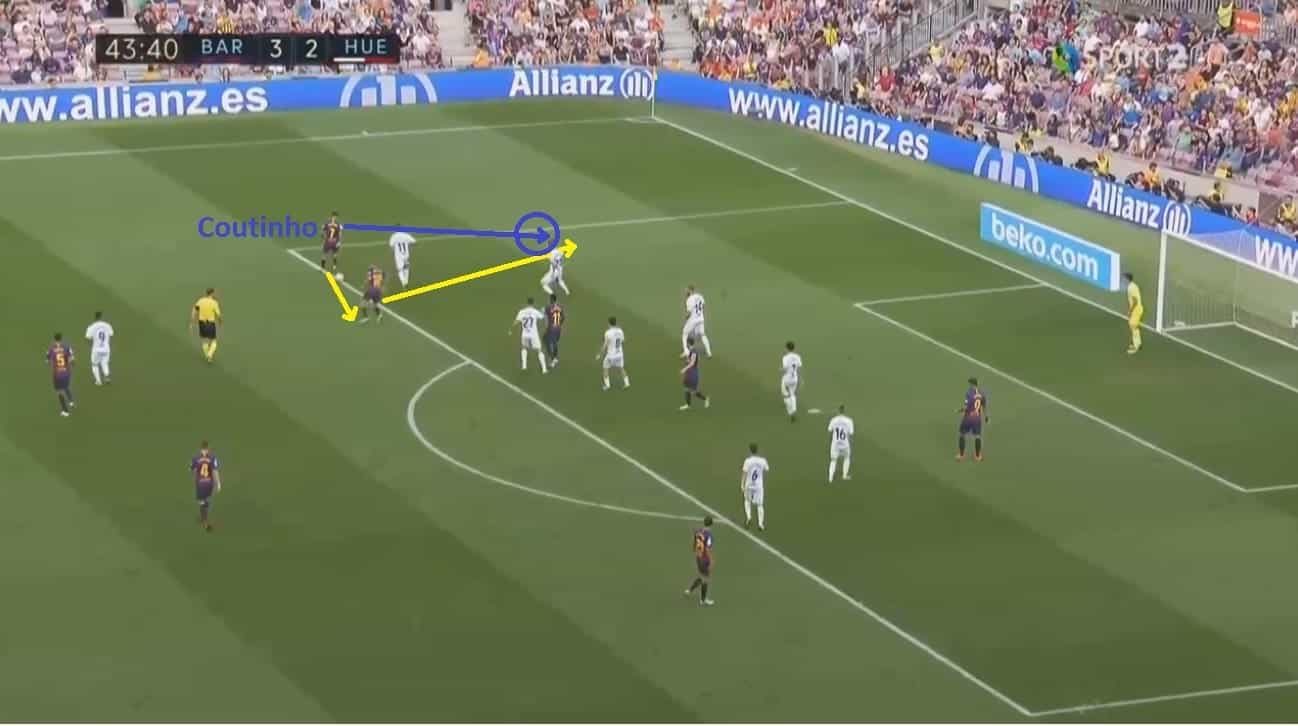
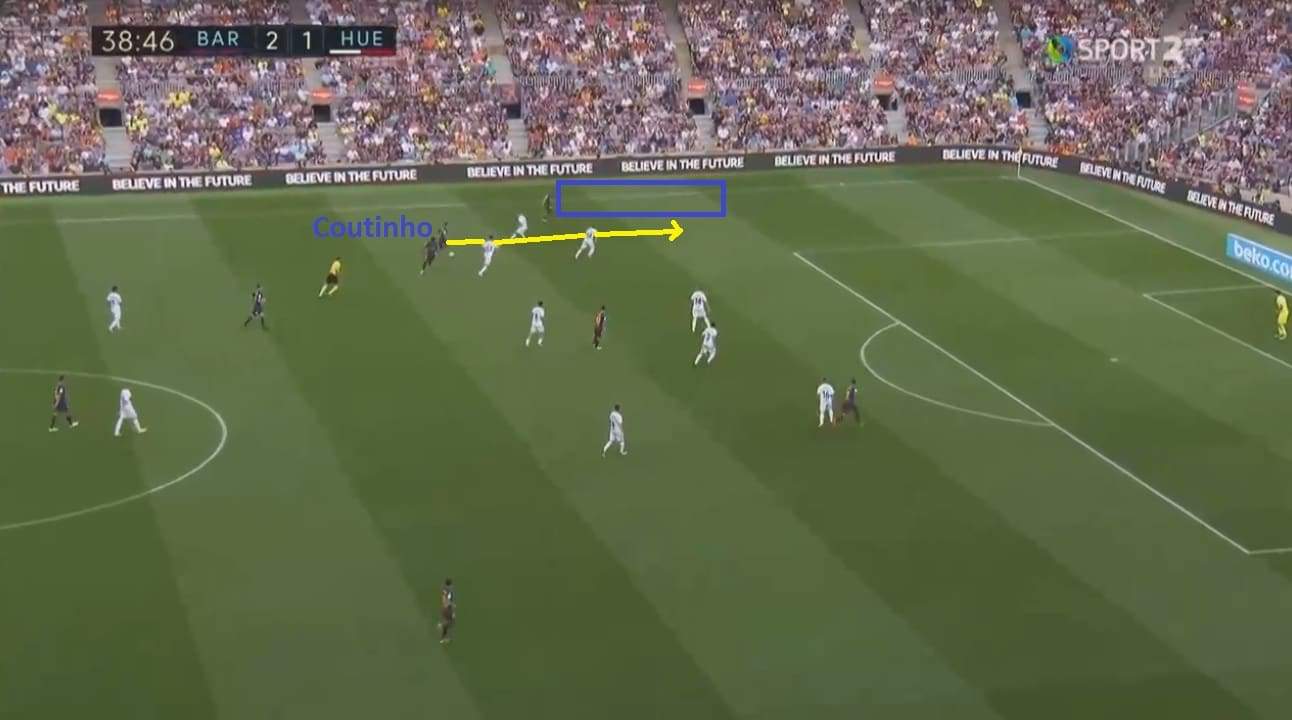
Philippe Coutinho also has a very robust hold on the ball. His off the ball moves into the dangerous areas against Huesca always put the opponent defenders under pressure. His tactical presence in the attacking phase provided Barcelona with plenty of chances to exploit the pockets of gaps in the structure of the away team.
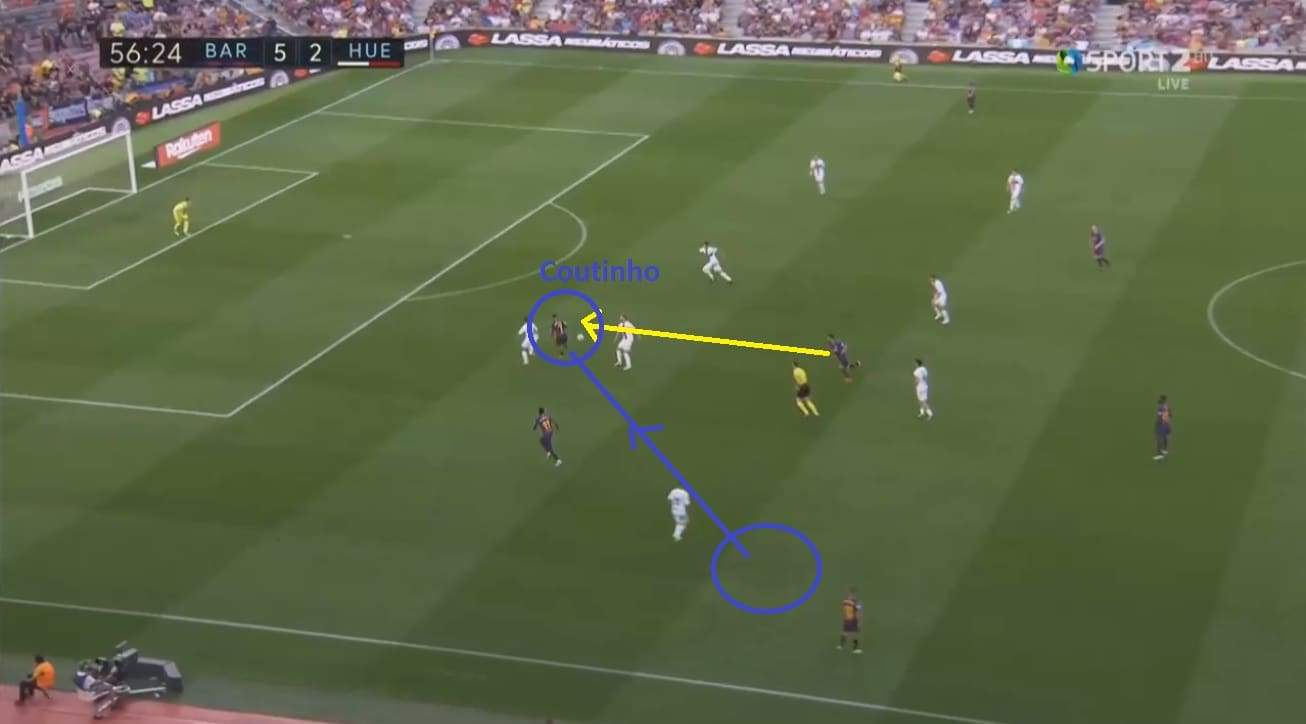
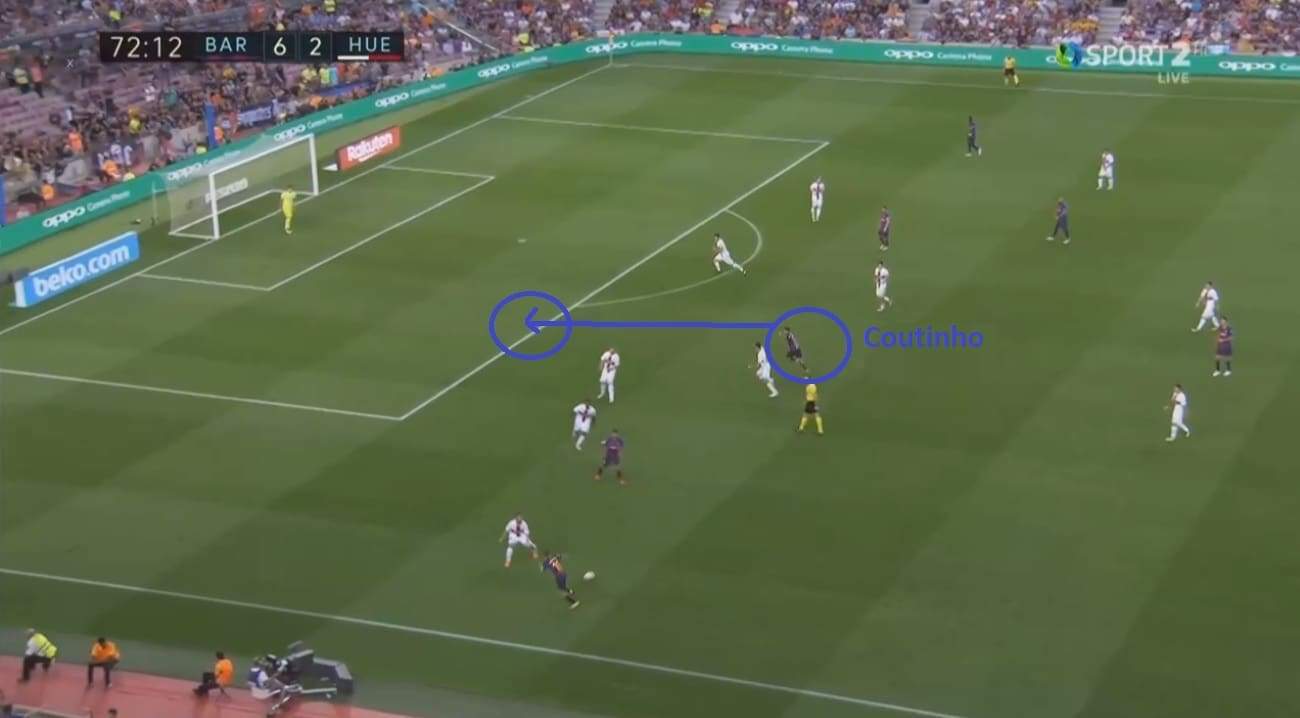
Coutinho is not only providing Barcelona much greater access to the width with outward passes and lateral off-the-ball movements during the passing plays but also has his sharp eye on the pockets of spaces in the deeper regions of the offensive half. His heat map below says a lot about this pitch coverage, which is not only greater than his last year’s coverage but also than that of Paulinho.
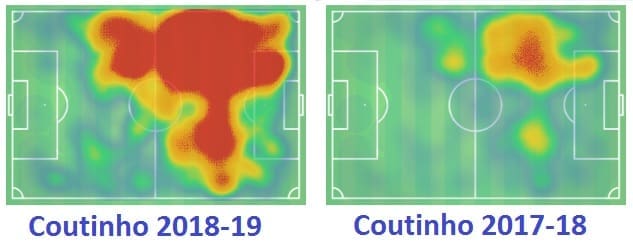
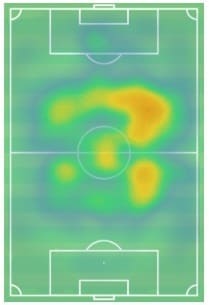
Restored 4-3-3
As mentioned above, Barcelona is back to 4-3-3 and is now evolving given the style of the new starting midfielders. In fact, with Coutinho in the central midfield, Barcelona’s midfield and frontline have become robustly cross-connected thus enhancing the coherency of the team’s new midfield shape. With increased accessibility to the touchline width, Coutinho is already enhancing the overall offensive shape of Barcelona.

Besides Philippe Coutinho, there is another young addition to Barcelona’s central midfield. Arthur, not in the starting line up yet, is proving himself up against his performance curve. He also has the capability to enhance coverage to the pitch though his presence is not so extended to the touchline width, unlike Coutinho. But the former Gremio kid possesses all that fits well to Barcelona’s emerging shape.
From MSN to MSD?
Barcelona’s re-evolved 4-3-3 is not just defined by the placement of midfielders like Coutinho and Arthur in the central midfield but also by the re-emerging position at the left wing by Dembele – the spot dominated by Neymar two seasons ago. The Frenchman was deployed at the right wing often at the right in the last season’s 4-4-2 set up. Now being at the left wing of 4-3-3, Dembele is enhancing Barcelona’s access to the wings with the defensive cover of three central midfielders behind him.
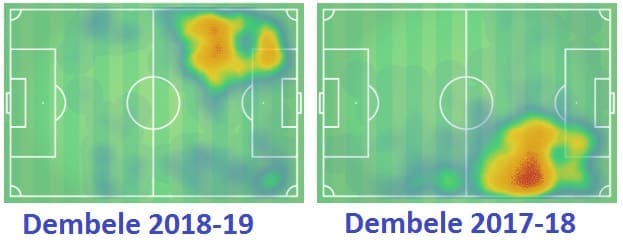
Against Huesca too, Dembele’s crosses from the width into the goal area enabled Barcelona to exploit the opponent goal with the likes of Suarez, and often Coutinho, present deep in front of the goal to touch and score off the first or even the second balls.
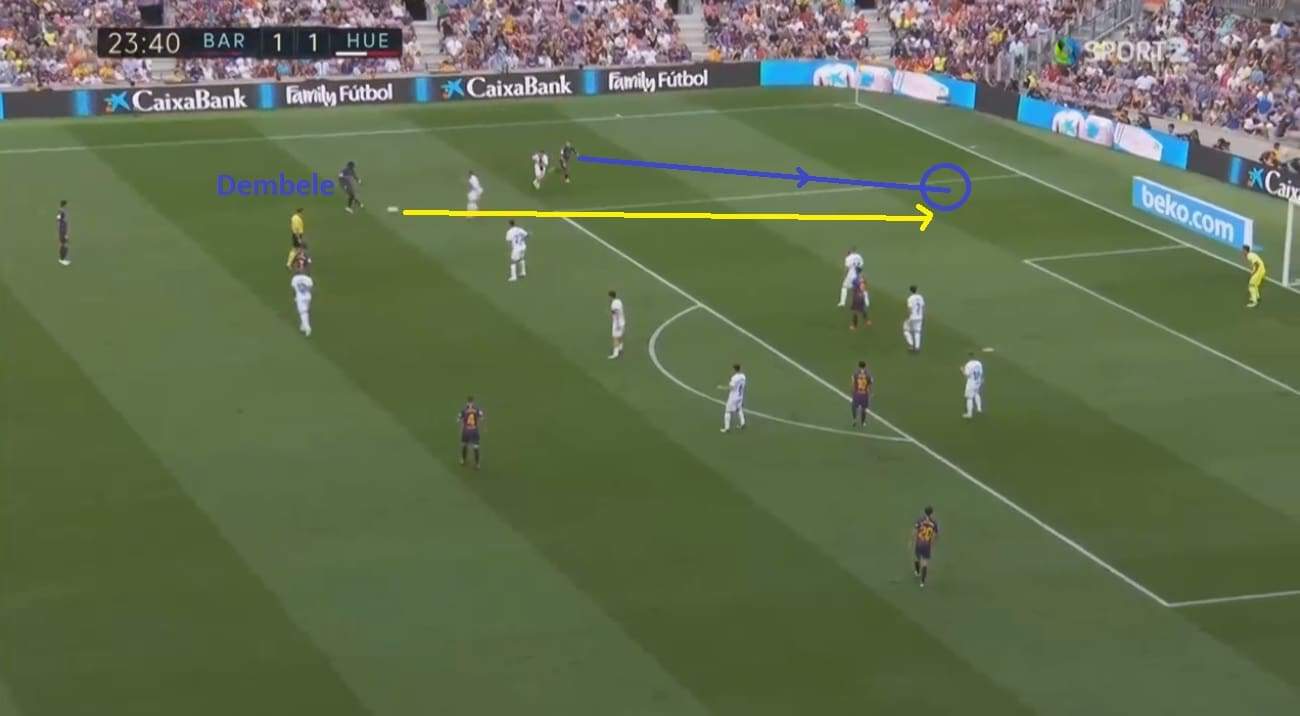
This also implies that switching from 4-4-2 back to 4-3-3 has enabled Barcelona to revert to its multidimensional attacking play with Dembele and Messi on either wings and Suarez as the real nine.
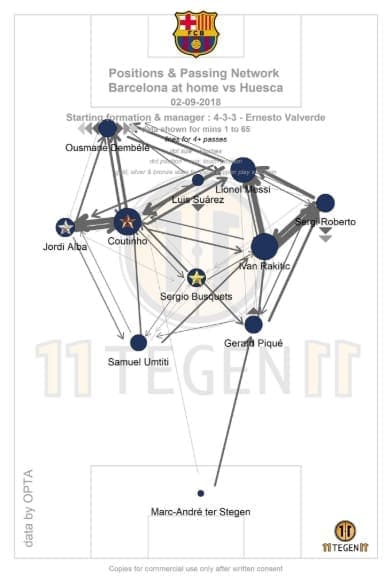
Like other midfielders, Dembele is also proving himself at the attacking front. If he continues providing control to Barcelona during the offensive phases while ensuring enhanced access to the wings and the goal-line width, Barcelona will be famous over time with their new attacking trio of MSD – Messi, Suarez, Dembele – the way they were with the MSN trio.
Conclusion
Summing up the tactical analysis of Barcelona’s new shape, we can infer that Valverde has had the likes of Coutinho and Dembele in his talent pool ready to make his team adapt to the life without Iniesta and Paulinho. By restoring to 4-3-3 coupled with the enhanced access to wings as well as more depth covering by the midfielders, Barcelona is already looking in a vigorous shape from the start of the season at both national and European front.

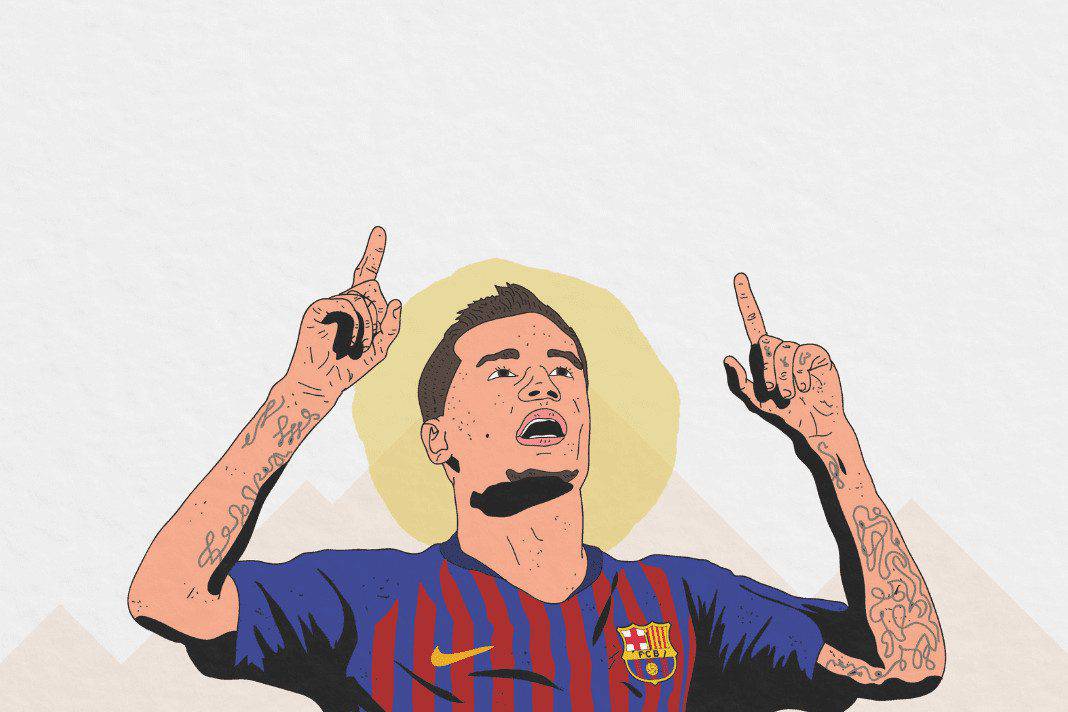



Comments